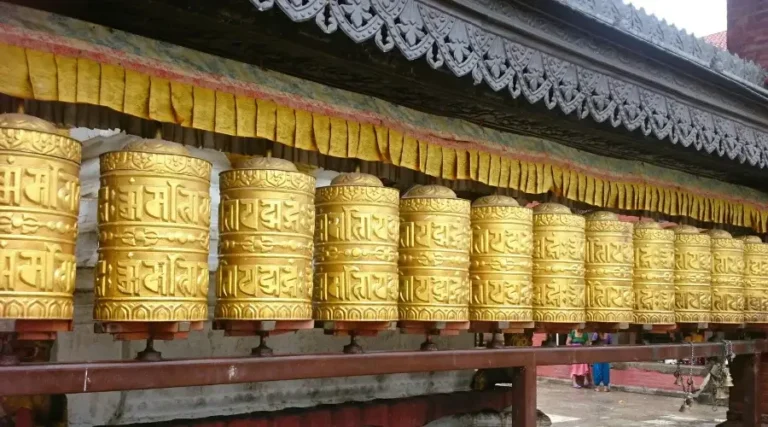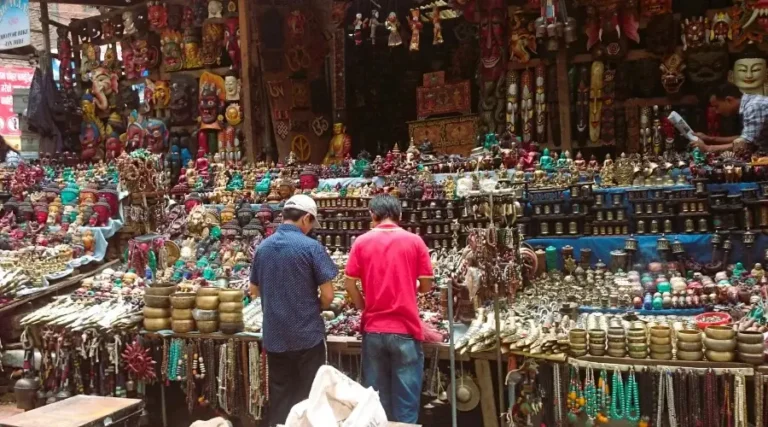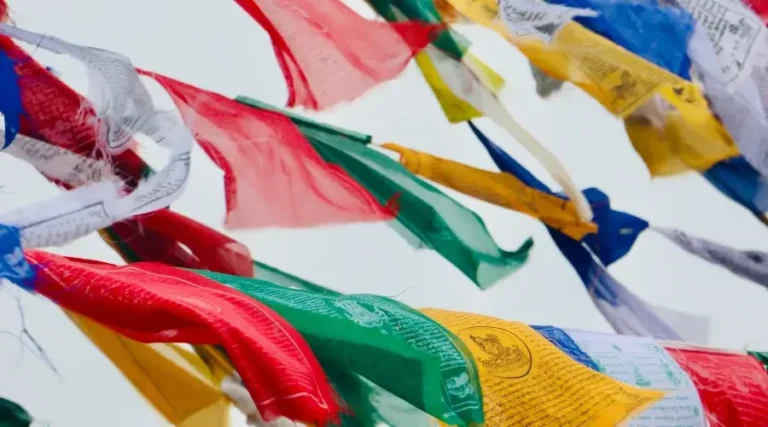Nepal Buddhist Tour
-

Trip Duration 07 Days
-

Max, Altitude 1350Meters
-

Type Comfortable
-

Best Season Every Month
-

Meals Breakfast
-

Accommodation Included
-

Activity Pilgrimage Tour
-

Difficulty Easy
- Explore the Birthplace of Buddha to absorb the strong spiritual power that pervades this holy location.
- One must explore the Swayambhunath Stupa in “Monkey Temple”, which provides outstanding valley vistas.
- The world’s largest Buddhist stupa, Boudhanath Stupa, spreads peaceful devotion across its site.
- Experience the holy Pharping Caves to explore the spiritual place where Guru Rinpoche spent his holy meditation time.
- You will see amazing Himalayan Mountain views during your flight to Lumbini.
- Become a witness to Buddhist monks who perform their devotional chants inside monasteries.
- Travel to Devdaha with Tilaurakot to explore locations where Buddha spent his early years.
- The practice of Buddhist rituals during your visit includes lighting a butter lamp and spinning a prayer wheel to gain blessings.
- Take your time relaxing and visiting the Kathmandu–Thamel tourist hub.
- Savor many delicious & authentic Nepali dishes with a cultural dance
Buddhists consider Nepal as a sacred place of devotion. Tourists can experience spiritual Buddhist heritage at historical sites which date back to ancient times during Nepal Buddhist Tour.
Among your sights will be stupas of sacred importance alongside both ancient monasteries and meditation caves.
Such a visit becomes special thanks to its peaceful environment and deep religious strength. Every phase of the travel from Buddhist heritage Kathmandu to the sacred birth site Lumbini becomes deeply significant.
As a traveler you will see two major Buddhist attractions Swayambhunath (Monkey Temple) and Boudhanath Stupa. The space houses many beautiful prayer flags together with turning prayer wheels and peaceful monk chants.
The Pharping Cave stands as a peaceful place because Guru Rinpoche meditated there. Visiting these locations provides you spiritual energy that brings both peace and a deep devotion.
Lumbini is one of the UNESCO World Heritage Site and the most important Buddhist pilgrimage site. The Maya Devi Temple is located at the specific location that Buddha emerged into this world.
A Nepal Buddhist Tour takes you to different monastery complexes that display distinct building designs following nation-based traditions. The pilgrimage route to Devdaha, together with Tilaurakot, lets visitors understand Buddha’s initial stages of life.
Back to Kathmandu will be the conclusion of your excursion. You should accomplish a deeper knowledge of Buddhism throughout this experience.
The combination of peaceful environments along with essential wisdom from Buddhism as well as its essential sites will create enduring memories for you.
Is Nepal a Buddhist country?
While Nepal does not have Buddhist as its official faith Buddhism remains deeply established throughout the nation. Nepal maintains secular status while most of its citizens adhere to Hindu faith.
Buddhism remains popular throughout Nepal as the country holds significant value for Buddhists throughout the world. Lord Buddha was born in Lumbini approximately during the 6th century BCE in the territory of present-day Nepal.
Tourists and Buddhist pilgrims from throughout the world visit the Buddhist sites of Swayambhunath, Boudhanath, and Lumbini.
Nepal shows peaceful religious coexistence between its Hindu-dominated society, where Hindus form approximately. 80% of the population and Buddhists make up 10% of the total religious followers.
As a country with a Hindu religious majority Nepal maintains numerous Hindu traditions that derive their elements from Buddhism. The Newar community embraces a special combination of Hindu and Buddhist religious practices.
Guests discover this fantastic religion combination throughout Nepali culture along with its festivals and temples which establish the country as an important religious location for Hindus as well as Buddhists.
Must-Visit Buddhist Pilgrimage Sites in Nepal
The important Buddhist historical sites located in Nepal welcome international visitors as well as Buddhist pilgrims. Tourism destinations associated with Buddhism throughout Nepal include the following places:
1. Lumbini – Birthplace of Lord Buddha
Among all Buddhist sites in Nepal Lumbini stands as the most important spiritual destination. Prince Siddhartha Gautama (Lord Buddha) founded his existence in Lumbini, which earns its place as a UNESCO World Heritage Site.
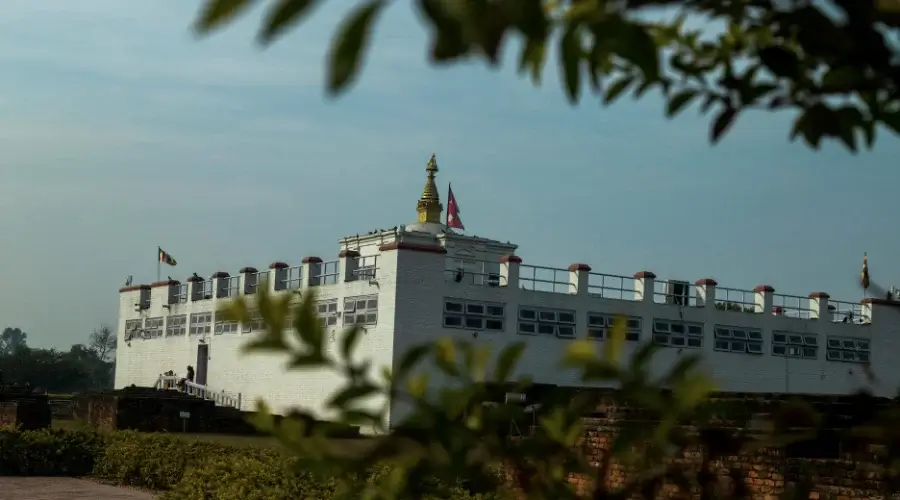
The Maya Devi Temple stands exactly in the area where Buddha was born. The Buddhist attractions at these locations include the Ashoka Pillar combined with World Peace Pagoda and the various international monasteries built by Buddhist countries.
2. Swayambhunath Stupa (Monkey Temple) – Kathmandu
The Monkey Temple, which people refer to as Swayambhunath, stands among the earliest Buddhist sacred sites of Nepal. The site stands elevated to provide breathtaking views across Kathmandu.
Buddha’s eyes and prayer flags together with spinning prayer wheels decorate this stupa site. The locale provides an unmatched setting for people to encounter Buddhist rites and customs.
3. Boudhanath Stupa – Kathmandu
Boudhanath is as one among the biggest stupas while serving as a primary Tibetan Buddhist practice center. The complex is surrounded by various Buddhist institutions combined with retail spaces and cafes where both Buddhist monks and visitors worship and practice meditation.
Viewers must include this destination on their list because of its tranquil atmosphere, along with its operational prayer wheels.
4. Kopan Monastery – Kathmandu
Kopan Monastery maintains its status as a Tibetan Buddhist shrine above the Kathmandu cityscape to the north. People visit this place for religious meditation programs as well as Buddhist spiritual education.
Visitors from all around come to this monastery because they want to learn about Buddhism along with experiencing its spiritual way of life.
5. Pharping – Sacred Meditation Caves
Near the Kathmandu outskirts resides Pharping, which is a vital destination for pilgrims. The Asura and Yanglesho caves at this location mark the meditation spot of Guru Rinpoche (Padmasambhava). The sacred location contains multiple monasteries that welcome visitors searching for serenity to meditate.
6. Namobuddha – Sacred Buddhist Pilgrimage Site
The sacred holy site, Namobuddha, is located 40 km from Kathmandu. Buddha sacrificed his life by feeding a starving tigress along with her offspring during his former existence, according to local tradition.
A peaceful setting rests at this location where lovely architectural structures of stupa combined with monastery provide breathtaking vistas and serene surroundings.
7. Tilaurakot – Ancient Palace of Buddha
Tilaurakot stands close to Lumbini as the place where Siddhartha Tedaka Buddha King spent his youth before his departure from royal life. Visitors can explore archaeological sites at this location that shed light on the youthful history of Buddha.
8. Devdaha – Maternal Home of Buddha
Buddha’s mother Queen Maya Devi made Devdaha her place of residence, though the location stands near Lumbini. People who want to explore Buddha’s first life history and family origins consider this place vital for their pilgrimage.
Buddhist Festivals in Nepal
Multiple Buddhist festivals take place across Nepal where traditional values of both religion and social practices lead the celebrations. Numerous pilgrims and monks together with tourists from across the globe gather for these events.
Nepal displays its remarkable Buddhist cultural heritage through various events starting from Buddhist life commemorations ending with Tibetan New Year festivities.
Buddha Jayanti (Buddha Purnima)
Buddha Jayanti represents the most significant Buddhist festival within the entire Nepalese territory. Lord Buddha reached nirvana during his death and the eve of enlightenment alongside the moment of his birth.
The Buddhist full moon day of April or May brings devotees to Buddhist sites where they engage in prayer activities while lighting butter lamps and conducting spiritual ceremonies.
Buddhist ceremonies are highly active in both Lumbini and Swayambhunath and Boudhanath during their respective celebrations.
Lhosar (Tibetan New Year)
The Tibetan New Year which is known by its name Lhosar takes place during the months of February through March. Each of the Tamang and Gurung and Sherpa communities executes their festivities differently during the celebration.
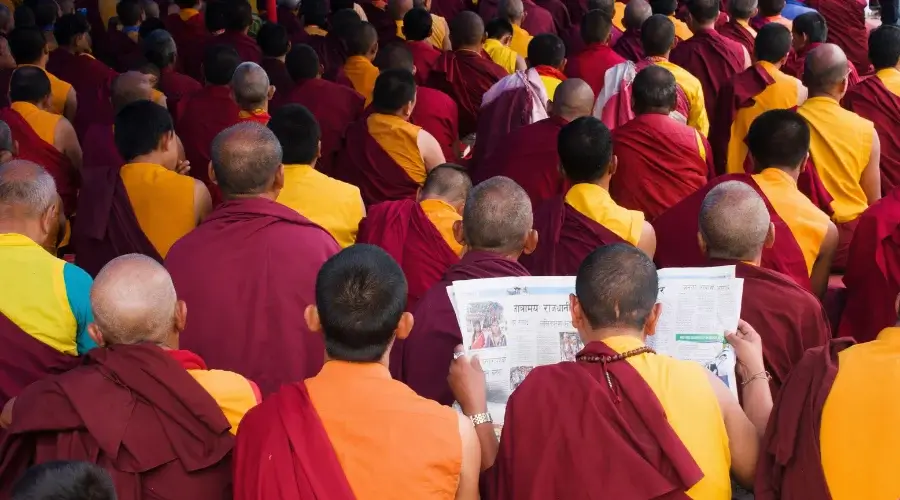
People participate in traditional dress wearing while visiting monasteries, while performing dances and making prayers to their deities. Festivities energize the Boudhanath and Swayambhunath stupas at their Kathmandu locations.
The Tao of Lhosar comprises three forms namely Tamu Lhosar (Gurung), Sonam Lhosar (Tamang) and Gyalpo Lhosar (Sherpa).
Mani Rimdu Festival
Mani Rimdu provides the Everest region with its largest Buddhist celebration which occurs every October and November. During the event at Tengboche Monastery the monks conduct ceremonial dances alongside prayers and rituals.
Buddhism wins its battle against evil power through this sacred symbol. The heritage celebration of the Mani Rimdu Festival taunts trekkers at Everest Base Camp and functions as a cultural and spiritual luminance during their Base Camp expedition.
Gunla (Sacred Buddhist Month)
The Newar Buddhist population of Kathmandu Valley marks Gunla as their sacred month-long Buddhist festival which occurs during August or September.
Religious followers make visits to Swayambhunath and Boudhanath stupas while carrying sacred texts and performing traditional musical instruments during this annual occasion.
People celebrate the festival through prayers and meditation along with musical processions, which establish an outstanding spiritual environment throughout the city.
Maghe Sankranti (Bodhi Day for Some Buddhists)
The January festival Maghe Sankranti has its Hindu roots, yet some Buddhists recognize it as Bodhi Day for religious observance. During this event some Buddhists make temple and monastery visits to illuminate butter lamps and engage in meditation beneath Bodhi trees.
Some followers of Buddha dedicate reverence to times when they commemorate his teachings and his reaching enlightenment.
Chotrul Duchen (Festival of Miracles)
The Festival of Miracles otherwise known as Chotrul Duchen takes place during February or March when the first full moon appears in the Tibetan calendar.
The celebration remembers how Buddha demonstrated miracles for disproving the non-believers. The performance of Buddhist rituals including scriptures reading and butter lamp lighting happens at Buddhist monasteries with the participation of monks.
Short Itinerary
Itinerary of Nepal Buddhist Tour
Arrival at Kathmandu International Airport. Meet & welcome by our representative & transfer to the hotel. Welcome drink followed by a tour briefing. The rest of the day is free for personal activities. Overnight in Kathmandu.
We will organize a day tour of three amazing UNESCO World Heritage Sites. These include Patan, a temple with beautiful old architecture, and the BauddhaNath Stupa, one of the largest stupas in the world.
Our guide will take you to Kopan Monastery, which is located in a peaceful location on top of a hill. Buddhist monks are happy to share the basic teachings of Buddhism with visitors.
This knowledge will help you appreciate the various locations that you will visit later on in the tour. Learn the best-kept secrets of Buddhism in Kopan monastery while enjoying the breathtaking landscapes surrounding the site.
Today, we will finish the day with the Swayambhunath Stupa. It is a temple worshipped by both Hindus and Buddhists, where you can witness the strong link between the two religions.
It is believed to be self-emerged from a lotus flower and resides on a top of a hill overlooking Kathmandu. Our next destination is the monastic hill of Pharping, a spiritual abode where Guru Rinpoche meditated before moving to Tibet.
After a short fly to Lumbini, you will discover the most famous place in the Buddhism;Lumbini which is the birthplace of Buddha. We won’t let you miss all the important locations in and around Lumbini significant for the life of Lord Buddha. There is no better way to end the trip than visiting the places important to the master himself.
There are many places in links with the Buddhism culture to visit in Devdaha. You also could find a historical tree known as PakariBrikshya, with approximate circumference of 16–20 metres. Finally we will finish our pilgrimage in Tilaurakot. It might have been the cardinal point of the ancient Shakyan city of Kapilavastu, where Gautama Buddha spent 29 years of his lifetime.
It will be the time to go back to Kathmandu. After settled in your hotel you could enjoy a free time to wander in the streets and to conclude this tour, Our team will organize a Farewell dinner in a typical restaurant with dance and music show.
Our office staff will take you to the airport for your final departure from this amazing country, Nepal.
 Price Info
Price Info
The prices may vary depending upon date of travel, Category of hotels, Group size, Surge Pricing and seasonal rush. So you are kindly mention detail in inquiry form so our team will work out for the best possible price.
Price includes
- Airport (Domestic and International) transfers on a Private tourist vehicle
- Twin-sharing/double accommodation in a 3-star based hotel as per the destination mentioned in the itinerary
- All ground transportation by private tourist vehicle.
- All Domestic flight included as per itinerary
- Daily required number of Mineral water provided
- Guided city sightseeing tour as per the itinerary
- An experienced and highly knowledgeable tour tour for the entire tour
- The required number of ground staff during the tour like Driver, Helpers etc.
- Wages, accommodation, meals, gear, insurance, and medications for all staff
- Entry permits and fees for all temples, parks, monasteries, and cultural and historical sites.
- A farewell dinner on the last night in Nepal
- All administrative expenses and government taxes
Price Excludes
- International flight fare and airport departure tax
- Lunch and dinner during the tour
Any beverages like Cola, Beers, Alcoholic Drinks - Tips for hostess and driver. (Tipping is expected).
- Nepal Entry Visa (Visa can be acquired easily after your arrival at Tribhuvan International Airport in Kathmandu with a fee of USD 50 for 30 days visa and USD 125 for 90 days visa)
- Your travel insurance.
- Any expenses other than the Price Include section
Trip Essential Information
Best time for Nepal Buddhist Tour
The best season for visiting Buddhist religious sites in Nepal exists within the months of March to May and September to November.
The months between March and May as well as September and November deliver the best travel experience since they offer ideal environmental conditions along with pure skies and appropriate temperatures.
Spring is the best travel season because Nepal because of perfect weather during this time along with its remarkable landscapes when they reach their peak.
During daytime in Nepal the sun shines brightly but nights remain cool because of these ideal conditions visitors can tour Buddhist locations at Lumbini and Swayambhunath alongside Boudhanath. The nation achieves enhanced beauty during spring because flowers blossom and nature turns green across Nepal, which results in peaceful travel conditions.
Visitors should choose to visit Nepal in Autumn from September to November since the rainy season moves out at this point. Nepal experiences excellent views of Himalayan mountains with perfect sunshine and pleasant temperatures during this season.
The religious significance of pilgrimage reaches its peak during autumn because both Lhosar and Buddha Jayanti festivals occur during this season.
During monsoon season from June to August is not favorable because heavy rainfall will affect your travel arrangements while hiking to distant Buddhist sites becomes more challenging.
Visitors who desire winter temperatures and chilly conditions should schedule their visit to Nepal in December through February because the higher elevations will experience harsh cold.
What to Expect on a Nepal Buddhist Tour?
The religious trip to Nepal Buddhist sites presents travelers with an exclusive combination of historical sites, cultural heritage, and beautiful natural landscapes. Here’s what you can expect:
Visit Sacred Buddhist Sites:
Tourists will visit both sacred Buddhist sites and important religious monuments consisting of Lumbini (the birthplace of Lord Buddha), Swayambhunath (the Monkey Temple), Boudhanath Stupa (one of the largest stupas in the world), and Pashupatinath Temple.
Multiple sites across the world maintain historic and deeply meaningful Buddhist significance for all followers of this religion worldwide. Travelers will encounter Buddhism at its foundational level because they will see monks along with pilgrims performing religious ceremonies.
Engage in Meditation and Prayers:
During Buddhist tours in Nepal tourists have an opportunity to join meditation workshops alongside the practice of prayers and sacred rituals. Several monastery and temple sites provide their visitors with meditation guidance.
The methods derive from spiritual practice because they deliver mental tranquility and direct access to Buddhist wisdom and principles.
Cultural Exploration:
You can experience the cultural differences of Buddhist communities while traveling through Nepal, which is most prominent in Kathmandu Valley and Lumbini.
On your travels you can observe Buddhist traditional artworks in addition to architectural features and spiritual observances such as dazzling ceremonial expressions and sacred ritual parades with masks.
Peaceful Environment:
Serene natural surroundings and calm settings work in perfect harmony with spiritual aspects during the Nepal Buddhist Tour. Spiritual relaxation and inner peace await visitors who seek both Himalayan Mountain views and peaceful monastery settings and green valleys in Nepal.
Delicious Local Cuisine:
Your Buddhist pilgrimage lets you experience Nepalese cuisine which provides a chance to enjoy classics like dal bhat (lentil soup with rice) besides Momo (dumplings) and various vegetarian delicacies.
The food served at Buddhist monasteries consists of straightforward home-cooked dishes which are in accordance with their peaceful doctrine.
Personal Growth and Peace:
When you participate in a Buddhist pilgrimage in Nepal it involves several stages of spiritual development beyond site visiting. Tourists can use the surroundings of the Buddhist teachings alongside peaceful environments to practice mindfulness as well as gain spiritual growth.
Tips for the Best Buddhist Tour in Nepal
Below are some of the best tips that one can follow for the best Buddhist Pilgrimage tour in Nepal:
- It is essential to honor local customs of the area when visiting religious sites since temple visitors must remove their shoes before entering.
- Tourists must dress modestly with respectable attire in religious areas while wearing clothing that covers their shoulders and knees.
- Spending time meditating at sacred places within monasteries provides an opportunity to deepen your spiritual connection.
- Local religious events provide excellent opportunities to learn more about Buddhist culture by actively joining Buddhist prayer sessions.
- You should connect respectfully with both monks and people from the area to gain knowledge about their spiritual conduct and wisdom.
- Take offerings of incense and flowers to Buddhist places like temples or stupas since these objects represent sincere reverence.
- Make the effort to exist fully in the present while fully embracing the spiritual ambiance of every destination.
- Before visiting, familiarize yourself with Buddhist teachings through reading philosophical content about the religion.
How to Prepare for a Buddhist Pilgrimage
- It is essential to research the important Buddhist locations in Nepal, including important attractions like Lumbini, Swayambhunath, and Boudhanath.
- Select your travel dates during the months of March-May or September-November since these periods offer the best weather conditions and festivals.
- Prepare with suitable clothes and sunscreen together with a hat and waterproof light jacket to suit different regional climate zones.
- You need to obtain travel insurance that covers healthcare needs, flight cancellations, and trip interruption services.
- Buddhist pilgrims should learn essential guidelines for Buddhist ceremonial manners which include performing bows and prayers alongside respecting holy objects.
- Hire an expert guide to understand Buddhist sites while receiving explanations about their historical and philosophical value.
Food During a Buddhist Pilgrimage in Nepal
The food options in Nepal cover a wide range during Buddhist pilgrimage visits. The dining establishments in Kathmandu Lumbini and Pokhara serve both traditional Nepalese food together with international meal options.
Pilgrims prefer eating dal bhat (a lentil soup with rice) and momo (dumplings) and vegetarian curries because these simple nourishing dishes are typical in local Nepal food. Buddhist monastic establishments prepare only vegetarian food because non-violent eating aligns with the fundamental Buddhist principles.
Food options in the remote locations are limited yet you can still find nutritious meals available for your consumption. The facilities of various monasteries serve vegetarian meals that utilize organic vegetables from local sources.
You can find an extensive dining selection in urban areas since eateries serve both traditional Tibetan cuisine and Western dishes that appeal to different tourist groups.
Those who follow vegan and gluten-free diets can obtain appropriate meal choices through advanced information from hotels or restaurants.
Accommodation During a Buddhist Pilgrimage in Nepal
People during the Nepal Buddhist Tour can choose between affordable guesthouses along with monasteries and upscale hotels.
Major cities such as Kathmandu and Lumbini and Pokhara present comfortable accommodation options which include hot shower services along with Wi-Fi connectivity and restaurants serving both local and international dishes. These facilities welcome both pilgrims and tourists simultaneously to provide peaceful accommodations.
Guests wanting to experience the genuine aspects of Buddhism during their pilgrimage can choose to reside in Buddhist monastic settings.
You can connect with Buddhist monks and practice meditation and absorb Buddhist traditions by staying at modest accommodations available at numerous monasteries throughout Lumbini and the Kathmandu Valley.
The available hospitality options in remote territory provides less luxurious and enhanced. The various accommodation options include basic lodges as well as homestays that create an inviting environment for guests.
© 2025 - Himalayan Trekking and Tours (P) Ltd. All Rights Reserved.











 Price Info
Price Info